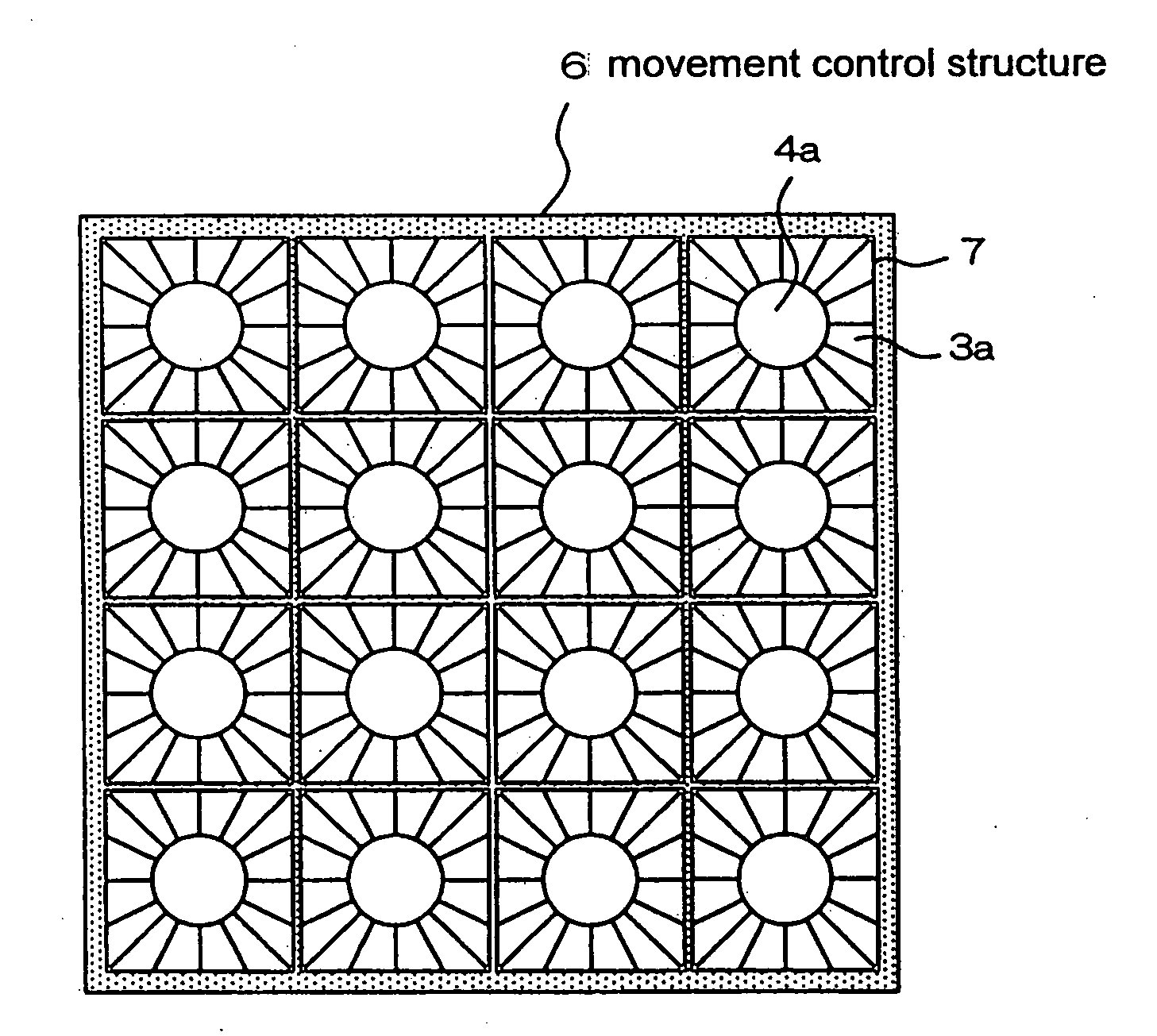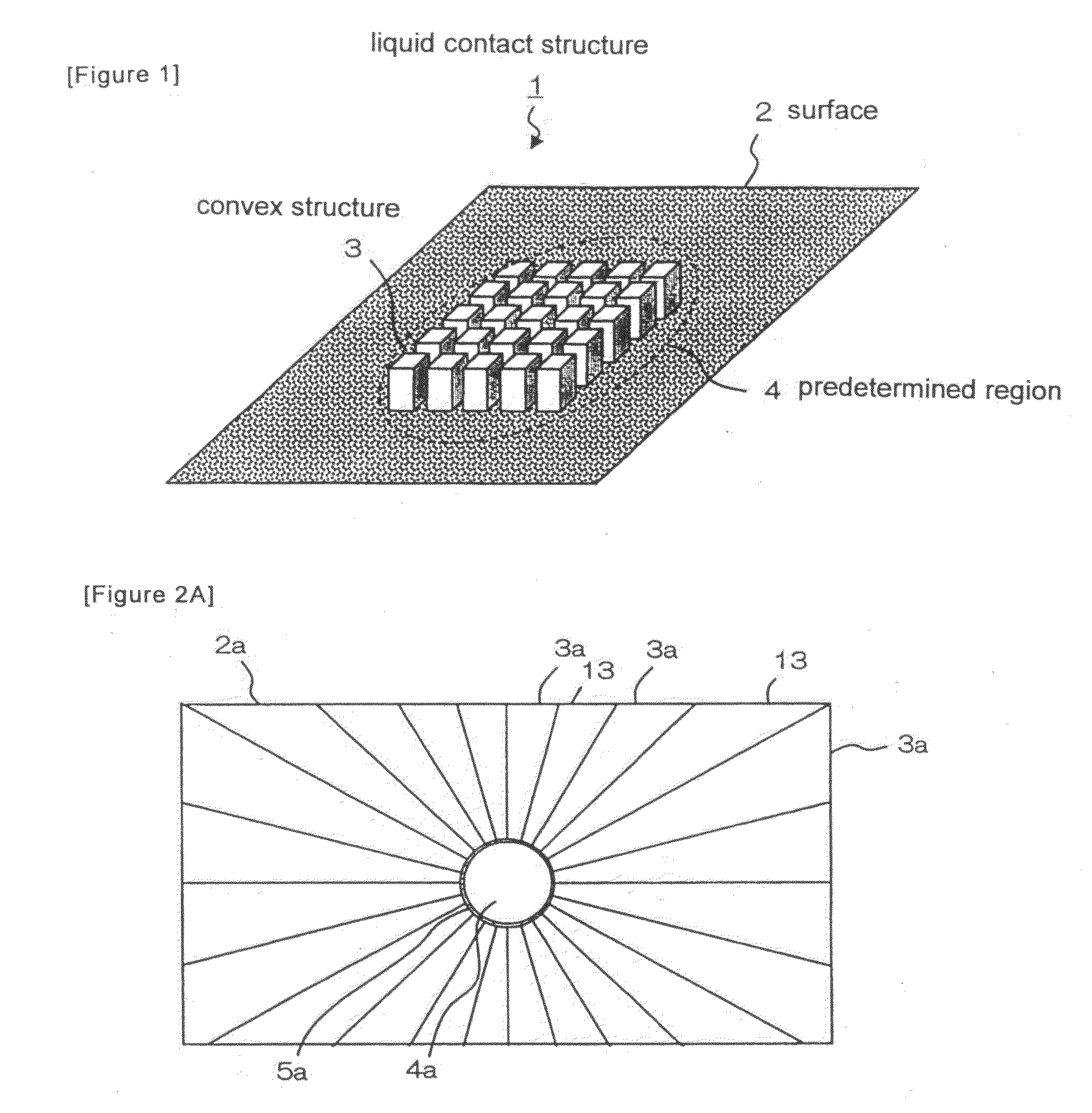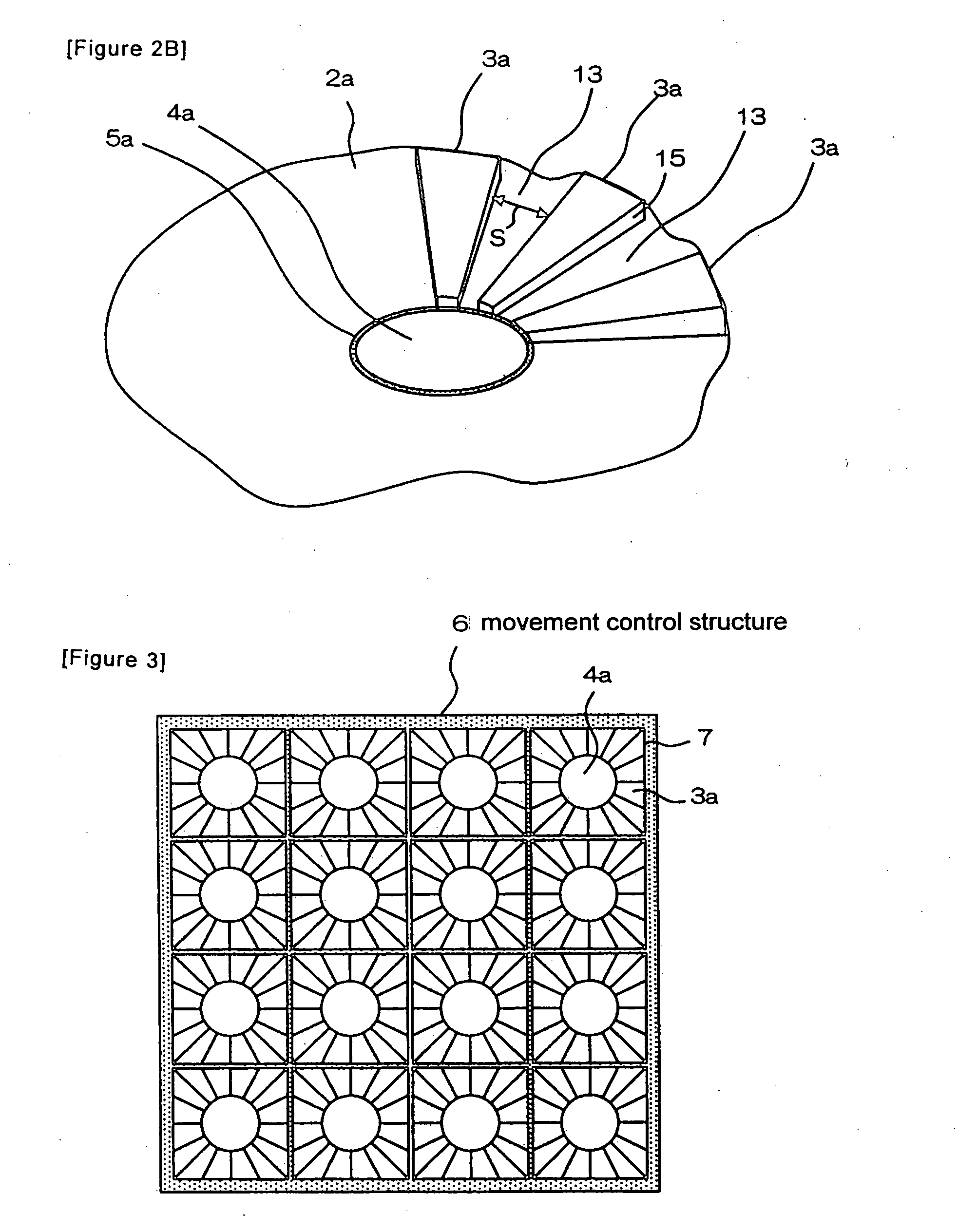Liquid Contact Structure, Structure for Controlling Movement of Liquid and Method of Controlling Movement of Liquid
a liquid contact and liquid technology, applied in the field of liquid contact structure, can solve the problems of limited sensitivity degradation of laser desorption ionization mass spectrometer sensitivity, etc., and achieve the effect of simple configuration
- Summary
- Abstract
- Description
- Claims
- Application Information
AI Technical Summary
Benefits of technology
Problems solved by technology
Method used
Image
Examples
first exemplary embodiment
[0050]FIG. 1 is a schematic perspective view of a liquid contact structure according to a first exemplary embodiment of the present invention. Liquid contact structure 1 is a bottom structure of a liquid storage portion (not shown) on a target plate of a mass spectrometer. The base plate (not shown) of liquid contact structure 1 has lyophilic surface 2 which is provided with a plurality of convex structures 3 and which is adapted to come into contact with a liquid. The area of the surface, measured per unit of the projected area, of a region in which convex structures 3 are formed increases by the area of the side surfaces of convex structures 3 that is added, as compared with an area which would be obtained if the region was flat. The ratio of the increase in the area of the surface is referred to as a “surface area multiplication factor.” The surface area multiplication factor is defined as a value which is obtained by dividing an increase in the area of the surface, which is obta...
second exemplary embodiment
[0057]FIG. 2A is a plan view illustrating a liquid contact structure according to a second exemplary embodiment. FIG. 2B is a perspective view of the liquid contact structure partially illustrating the convex structures. Many fan-shaped convex structures 3a having certain heights are provided on surface 2a. Being spaced apart from each other, convex structures 3a radially extend toward predetermined circular region 4a that is located on the central portion of the base plate. The regions located between convex structures 3a are flat portions 13. This arrangement can be obtained by etching a base plate made of glass based on the fine processing technique for semiconductors. Embossing, press working and machining may also be used depending on the materials. Surface 2a that includes convex structures 3a is lyophilic, similar to the first exemplary embodiment. Surface 2a may also have a coating mentioned above in order to inhibit adsorption of protein etc.
[0058]Also, in the present exemp...
third exemplary embodiment
[0062]FIG. 4 is a plan view illustrating part of a channel for a sample analyzing chip. Channel 9 is formed on chip 8. Convex structures 3b having column shapes, similar to the ones illustrated in the first exemplary embodiment, are formed on the bottom surface of channel 9. Convex structures 3b are arranged such that the density thereof increases stepwise as it becomes closer to predetermined region 4b. Convex structures 3 having the largest density are arranged within predetermined region 4b. Accordingly, the surface within predetermined region 4b has a larger surface area multiplication factor than the surfaces in the regions in the vicinity of predetermined region 4b, and the surface within predetermined region 4b also has the highest lyophilicity. Such convex structure groups 14 are arranged on chip 8 along the longitudinal direction of channel 9.
[0063]In the figure, peripheral region 5b, in which convex structures 3b having smaller density are arranged is provided outside pred...
PUM
 Login to View More
Login to View More Abstract
Description
Claims
Application Information
 Login to View More
Login to View More - R&D
- Intellectual Property
- Life Sciences
- Materials
- Tech Scout
- Unparalleled Data Quality
- Higher Quality Content
- 60% Fewer Hallucinations
Browse by: Latest US Patents, China's latest patents, Technical Efficacy Thesaurus, Application Domain, Technology Topic, Popular Technical Reports.
© 2025 PatSnap. All rights reserved.Legal|Privacy policy|Modern Slavery Act Transparency Statement|Sitemap|About US| Contact US: help@patsnap.com



